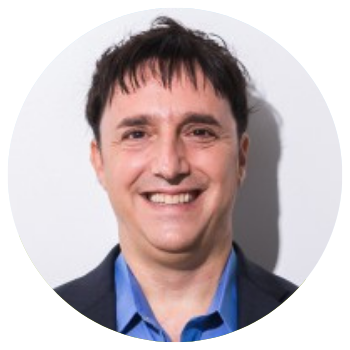Neal Schaffer
Influencer marketing in the age of influence
Neal is a digital marketing consultant, author and speaker. He started his blog back in 2008 and published his first book via LinkedIn. He launched his podcast in 2013.
His link to influencer marketing stems from finding the needs of his own market. He was getting a lot of questions about influencers and influencer marketing, but that marketers were getting misled with what both were.

The Summary
Every business has influencers they can engage with. And these are their customers and employees. It seems to Neal crazy not to engage with your advocates in a B2B space as they are your salespeople on LinkedIn by offering influence. Termed employee advocacy or employee influencers, salespeople are connecting with their prospects all day long. So tapping into these connections is highly important.
Looking at an employee as an advocate can often lead to questions of why aren’t they sharing my content. If you look at employees as influencers you actually ask them how can we help you with our resources. Then the influencers become amplifiers of your content and involved in the content. For example, asking them to get your podcast guests. Developing the relationship will have much more impact on your marketing long-term. It’s treating them as influencers – appealing to their ego.
Some companies now are offering nano-influencer training. Giving the person what they want to get the content they need, in their personal brand strategy. This is something you can bring to the table as once you offer them value, they are likely to share your content through the collaborative mindset.
How do you measure the success of influencers?
Is the influencer doing something that is making or saving us money? B2B marketing budgets were going towards content so if you can leverage internal resources, it is likely to convert more also.
How do they help sales? At some points in the funnel, they are going to create changes. But it’s about understanding which part of the funnel activities they can influence.
What do you do when your CEO is a non-believer?
The biggest influencer should be your CEO and executive team. 10 years ago we had the same questions when social media began. It begins with education, experimenting and painting a picture of the results we have from influencer marketing. Showing the effects is the best approach. It can be as simple as showing your competitors are doing what you want to do.
Do you see LinkedIn coming to a peak soon?
LinkedIn has a recruiter solution, LinkedIn has sales navigator. So LinkedIn doesn’t have to be all algorithm to have company page success. When compared to Facebook and Instagram, LinkedIn can offer more clicks and greater conversions.
Neal wouldn’t say it’s too late to get started. If you can build a community with unique content, you can still get your brand out there. But it is incredibly pay to play in 2020 in getting your company message out there unless you get your employees and influencers speaking about your brand also.
From a business audience, podcasts beat TikTok every time. In general social media doesn’t hold long-lasting power. Google does. You need to put it all in perspective. He sees social as a way to collaborate with influencers but the pillars to go back to are your blogs, podcasts and website.
How do you become an influencer?
Your personal branding starting with your LinkedIn profile. Once you understand that, find out the personal things that differentiate you from other people in your field. It should showcase your strength to then connect with your network. LinkedIn is up to 700 million users. So starting to build your network and then offering quality, engaging content, which could include sharing links of interesting things in your industry. Then once someone comments or likes your post it will show up more often next time.
If your company has an employee advocacy programme great, but if they don’t go into your feed and engage with others. This will help you become that top 10% who engage on a regular basis.
Neal joined LinkedIn to try and get a job in 2008. But this resulted in his network being recruiter focused and the content he shared was not being engaged. He is now de-connecting with people to make sure his content is getting to the connections he wants and business as a result.
Why is some people’s mindset that social media is for the under 30’s?
It’s also why influencers are painted in a bad light because they are perceived as just for young people. But a lot of it is a lack of understanding as those young people who started on social media in their 20’s are now your potential customers. Business owners and executives are the people who don’t participate themselves and so they often say it’s just for young people. But that mindset is losing business. Social media is becoming a bigger part of our DNA and it’s just time for people to wake up and understand that 98% of employees are on 1 social media channel.
B2B brands to look at:
- Cisco
- Oracle
- Microsoft
- Intel
These companies are the ones that have influencer programmes and employee advocacy programmes. Mostly due to the budget available in the bigger companies as it becomes part of the infrastructure. It’s digital-first to them and that includes all the tools at your disposal.
How do you create an influencer programme on a budget?
Neal would start with a meeting. It starts with a conversation to educate and discuss the ideas. It can establish whose interested and how the programme would work. It doesn’t start with an announcement or tool training. It’s about collaboration first. Look at your employees that posted in the last 30 days – they are your influencer team.


